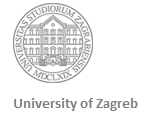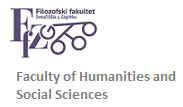Name of course: Historical sociolinguistics
Instructor: Dr. Alexander D. Hoyt, senior lector (lecturer in foreign languages)
ECTS points: 5
Language of instruction: English
Classroom hours weekly: lecture: 1 seminar: 2
Semester: Winter 2012/13
Status: elective course
Maximum enrolment: 20 students
Course description: The goals of this course are twofold. The first goal is to introduce students to the field of historical sociolinguistics, in which scholars studying the history of individual languages combine the methods of historical linguistics with those of sociolinguistics (especially variationist, or “Labovian”, sociolinguistics) in an attempt to reconsruct processes of language change in their social context. Research in this field tends to focus on texts that most closely represent spoken language (e.g., personal letters, theatrical plays, and court testimony transcriptions). The majority of historical sociolinguistic research has been done on Early Modern English, the largest project by far being the Corpus of Early English Correspondence (CEEC), a Finnish project headed by Terttu Nevalainen. Most other research in the field has been done on northern European languages such as Swedish, German, Dutch, and French. The second goal is to give students some “hands-on” experience. They will be shown how a completed digital corpus (e.g., the CEEC) can be used for basic research. In addition, students will participate in the construction of a sociolinguistic corpus by transcribing and analyzing personal letters written (or received) in Croatia in the late 1800s and early 1900s. Although the primary focus of this project is linguistic, students specializing in other fields, such as history, sociology, communications, and political science, should also find the course interesting from the socio-historical point of view, because the letters studied will give them insight into the everyday problems and experiences of people living in Croatia a century ago.
Grading method: The final grade is based on continuous assessment, which includes regular attendance, preparation for and participation in class, and timely submission of both a group report (4 students) and an individual term paper. the paper is worth 40% of the final grade; the group report, 30%; and other elements of continuous assessment, 30%. Students must fulfill all elements of continuous assessment in order to pass the course.
Course units:
1. Introduction and description of course requirements
2. Synchrony and diachrony
3. Historical sociolinguistics: beginnings and general goals
4. Applying contemporary sociolinguistic methods to data from the past
5. The role of the linguistic corpus in studies of linguistic variation
6. Private letters and old newspapers as sources for historical sociolinguistic analysis
7. Other written sources for historical sociolinguistic analysis
8. Orthographic variables
9. Phonological variables
10. Grammatical variables
11. Lexical-semantic variables
12. The influence of class, age, and gender on linguistic variation
13. Social networks and mobility in relation to linguistic variation
14. Internally and externally motivated language change
15. Presentations of student research
Required reading:
– Hernandez Campoy, Juan M. & J. Camilo Conde Silvestre (eds.). 2012. The Handbook of Historical Sociolinguistics. Wiley-Blackwell.
Secondary reading:
– Barton, David & Hall, Nigel (eds.). 1999. Letter writing as a social practice (Studies in Written Language and Literacy 9). Amsterdam/Philadelphia: John Benjamins.
– Brozović, Dalibor i Pavle Ivić (1988), Jezik, srpskohrvatski/hrvatskosrpski, hrvatski ili srpski. Zagreb: Jugoslavenski i leksikografski zavod “Miroslav Krleža”.
– Lass, Roger. 1997. Historical linguistics and language change. (Cambridge Studies in Linguistics 81). Cambridge: C.U.P.
– Milan Moguš. 1995. A History of the Croatian Language: Toward a Common Standard. Zagreb: Nakladni zavod Globus. Translated by Alexander D. Hoyt & Lelija Sočanac.
– Nevalainen, Terttu & Raumolin-Brunberg, Helena (eds.). 1996. Sociolinguistics and language history: Studies based on the Corpus of Early English Correspondence (Language and Computers: Studies in Practical Linguistics 15). Amsterdam – Atlanta, GA: Rodopi.
– Nevalainen, Terttu & Raumolin-Brunberg, Helena. 2003. Historical sociolinguistics: Language Change in Tudor and Stuart England. London: Pearson Education.
– Nevalainen, Terttu & Tanskanen, Sanna-Kaisa (eds.). Letter writing (Benjamins Current Topics 1). Amsterdam/Philadelphia: John Benjamins. [previously published in the Journal of Historical Pragmatics, 5:2 (2004)]
– Romaine, Suzanne. 1982. Socio-historical linguistics: Its status and methodology (Cambridge Studies in Linguistics 34). Cambridge: C.U.P.



